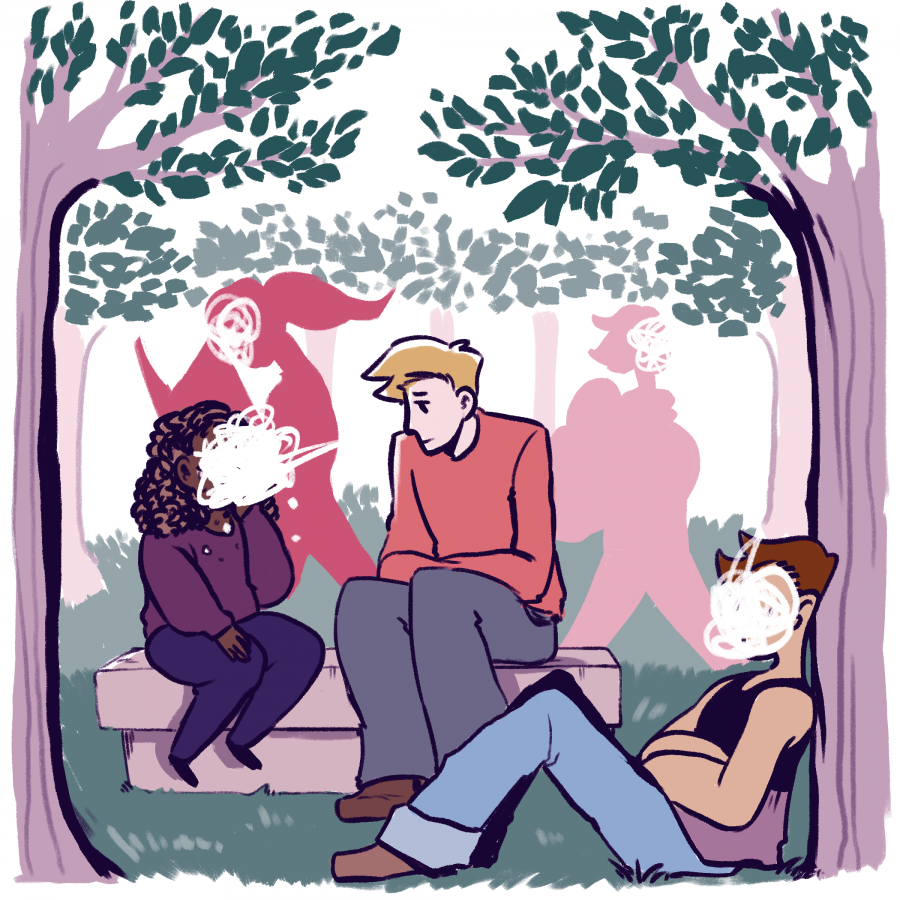Early Saturday morning, a neo-Nazi rally by the group Patriot Front took place on the South Mall, an area highly frequented by students at the University of Texas at Austin. On Monday, students returned to class as usual and walked past the area of the rally. Although the individuals may no longer be on campus, students of color will remember this incident for days and weeks to come. As they handle the challenges that come with studying at UT, they must also come to terms with a hateful world. They must reaffirm their value and rights to safety and happiness, regardless of the violent racism espoused by others.
Long before President Donald Trump was elected, white supremacist rallies terrorized communities across the country. White supremacy has existed in America and continues to exist today — this is a basic truth. Not only does it manifest in secret gatherings with torches and hoods, but it also impacts people of color on a daily basis. Racist rhetoric and unequal fields of opportunity are roadblocks to equality, influencing how minorities view their ability to succeed.
White supremacy is not an individual issue. It is a systemic problem that is consciously and subconsciously upheld by the societal structures. Most white students would never regard themselves as white supremacists. However, by participating in oppressive institutions, the system works against anyone who is not white, male, heterosexual or able-bodied. White supremacy does not only take the form of shouting the n-word. In fact, in today’s society, this is not as pervasive as our country’s dominant structures.
White supremacy, most often, is invisible to the unaware eye. Rhetoric that isn’t followed by action is a more common symptom. It is not enough to hashtag your support for marginalized communities. If you only show up for students of color online but never in person, you’re failing them. If you want to make a difference, start at UT. Don’t feel uncomfortable saying Black Lives Matter. Call out when magazine covers only glorify white women and your friends uphold these Eurocentric beauty standards. Such instances of passive racism are just as damaging as the rally. The expectation that each person must assimilate to whiteness, and if they do not, they are disruptive, inappropriate or less important, is just as damaging.
Although some may consider politics detached from their identities or as an outlet for fun and late-night entertainment, they are inherent to one’s identity. When students of color feel out of place or unwanted in spaces on campus, they cannot “blend” into the diverse melting pot UT claims to be. Their existence is political, especially given the current social climate.
While Trump has offered racists and racist sympathizers a platform to openly espouse hatred against minorities, it is also important to recognize the discrimination and anti-black violence that has occurred for centuries. UT has its own racist history. From the previous presence of Confederate statues on campus to buildings still named after racist individuals, more work needs to be done to address this history. Additionally, spaces like West Campus and Panhellenic Greek life are not as welcoming to students of color as their white counterparts. Yet, we are forced to live in this reality. The campus community should now ask, what are we normalizing and asking from students of color? How can we better support their voices and needs? UT has nothing to gain from putting up a facade of equality.
By contextualizing past with present, it should be alarmingly clear that politics are not just sound bites on talk shows. Being able to ignore one’s identity is a privilege, especially since minorities are constantly reminded of their “otherness” and their differences. Despite these challenges, minorities are speaking up for themselves and elevating their voices as they demand for the University to protect them and openly condemn white supremacy.
It is a testament to the solidarity and strength of students of color on campus that they continue to move from one day to the next. The University cannot wait for lives to be endangered before acting and taking a stance against white supremacy. Only after they show students that they want to make this an accessible space, free from neo-Nazis and racism in general, can students begin to move forward from Friday’s threatening message.
As a solution, words that speak against hatred need to be followed by tangible change. When University leadership claims to care for all students, we expect mental health resources will better support issues unique to marginalized students. We also expect more faculty of color to be recruited and retained on our campus. We expect the University to increase the amount of multicultural centers and safe spaces on campus and ensure the security of these locations.
Students of color are here and irreplaceable. It is up to University administration and the student community to call out white supremacy for what it is and move past the discomfort of difficult conversation. It is vital that students of color are cared for on this campus, and that requires an openness to change and a reframing of what has been and still is normalized.
McMorris is a political communication and African and African diaspora studies junior. Zia is an international relations and global studies junior. They are the co-editors-in-chief of ORANGE magazine.





















